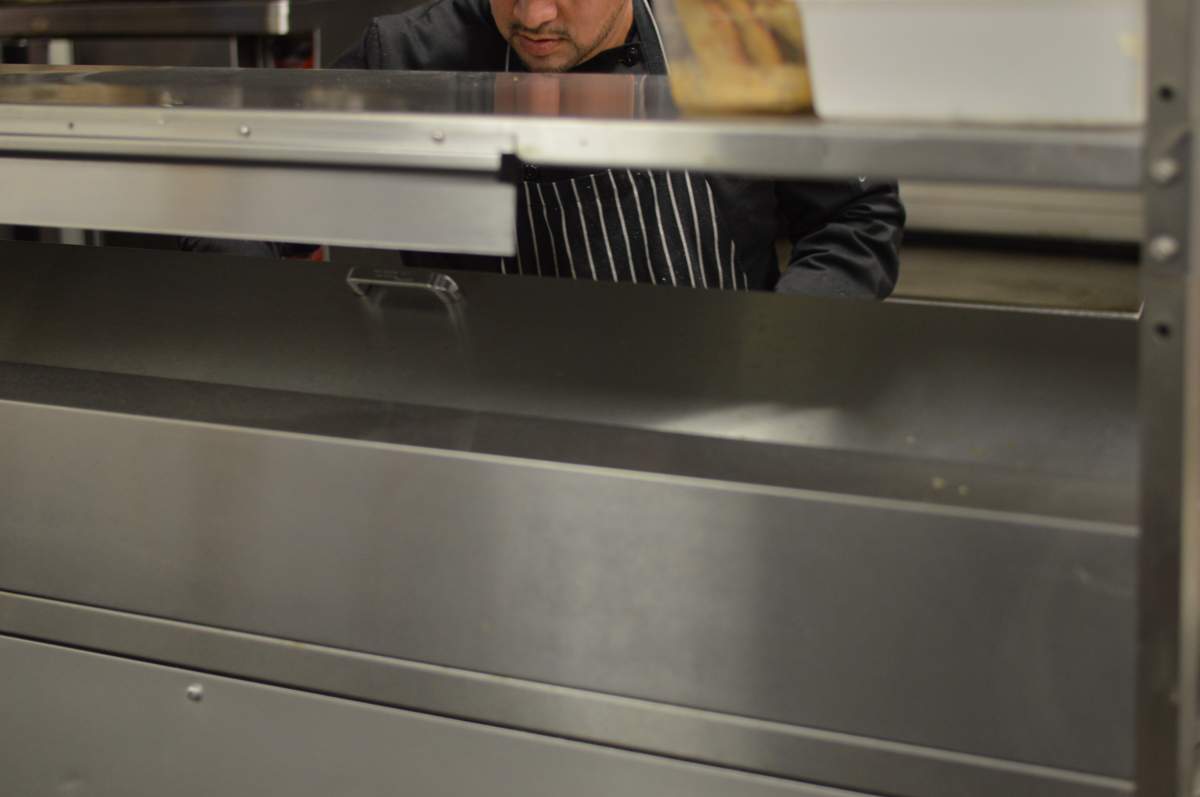A mold-filled fridge, rodents in the kitchen and food being exposed to sewage are just some of the incidents you can find reported on the Nova Scotia restaurant inspection website.

But with at least six restaurants in the province going six years without being inspected, it’s the incidents that you can’t find — the ones that may have been missed — that should concern you.
Restaurants can go years without inspection
Depending on a restaurant’s classification, Nova Scotia’s regulations require them to be inspected every six, 12 or 18 months.
Global News analyzed 43,791 inspection records and found that despite the province having one of the most lax inspection regimes in the country, it hasn’t been able to meet its own standards.
Data obtained from Nova Scotia’s online database of restaurant inspections and multiple freedom of information requests indicate that 2,759 of the 8,434 restaurants that have operated in Nova Scotia during the past seven years have gone 18 months or more without an inspection — the maximum time allowed by provincial guidelines.
The province says that there are roughly 6,000 restaurants currently operating in the province.
Some of the food establishments that have gone more than 18 months without an inspection include grocery stores, schools, prisons, markets, pizza parlours and full-service restaurants.
The large periods of time between inspections is a puzzling departure from norms in the rest of the country, food safety experts say.

Get weekly health news
“It doesn’t follow their policy. So you either say the policy is wrong, or we’re not putting enough resources to support what we care about,” said food safety expert Sylvain Charlebois, dean of management at Dalhousie University. “You either actually hire more inspectors, review what they’re doing, or change the policy.”
READ MORE: N.S. restaurants can go 6 years without inspections
Iain Rankin, Nova Scotia’s Minister of Environment, who heads the agency in charge of inspections, says that the province has recently cleared a backlog of overdue inspections.
“There were 1300 outstanding in April of this year and that’s been reduced drastically now,” Rankin said.
As of Nov. 10, 2017 that figure is now 416 restaurants.
Rankin stressed that the government focuses on inspecting high-risk establishments.
“Out of the ones that are overdue, 90 per cent are low- to medium-risk, so we’re talking about convenience stores and those type of establishments,” he said.
Rankin says that due to the high volume of restaurants in the province, meeting guidelines will always be difficult, comparing the exercise to attempting to hit a moving target.
“I think it’s impossible to say that it’ll ever be zero, because we have 6000-some restaurants today, and tomorrow there could be a whole bunch of new ones opening up,” Rankin said.
Foodborne illness in Canada
Health Canada estimates that every year, more than four million Canadians suffer from foodborne illnesses, and the cost of treatment can range anywhere between $12 and $14 billion.
Rick Holley, a professor emeritus at the University of Manitoba who specializes in food safety, says those statistics likely don’t account for every incident that occurs in Canada.
“The true extent of foodborne illnesses in North America is often grossly underestimated, and it’s often ignored until there is a major outbreak,” he said.
WATCH: Concerns around Food Safety Inspections in Nova Scotia

Governments prioritize issues that they can fix, Holley says, and that means food safety is often relegated to the bottom of the list.
In Canada, the federal government monitors and inspects large-scale food production and the country’s imported and exported foodstuffs. Provincial governments deal with small-scale operations, such as restaurants.
These divisions leave a patchwork of regulations across the country as each jurisdiction creates its own standards and practices.
Holley said that food safety is primarily the role of those producing food. But he says that doesn’t mean governments don’t have a role in food safety.
“It’s very clear, not just in Canada, but in many countries, that if you have a food service system that is unregulated and unmonitored, you’ll have people cutting corners or hiring staff that are untrained,” Holley said.
“If there is no oversight to ensure that the food business is going to be held accountable, then the whole system just falls into disarray. ”









Comments